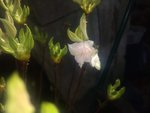Leo in N E Illinois
The Professor
- Messages
- 11,488
- Reaction score
- 23,837
- USDA Zone
- 5b
Okay, at least you have some deciduous azalea, northern lights types, in the landscape. Point of the thread is actual experience. Not speculation, not Satsuki. There are enough Satsuki threads,
I am not certain, as I am learning myself. Your description of the difficulty of removing ovaries of seed pods sounds "overwrought". In satsuki it is simple to snip the developing seed pods off with a scissors. Is it REALLY that different for a deciduous azalea? Not speculation, but in real life?
My first deciduous azalea was Mandarin Lights, I owned it from roughly 2005 to 2008. I don't remember the developing seed pods, post flowering as being difficult to remove at all.
My second is 'White Lights', which I bought in autumn 2019, and have yet to see bloom, so I am not that experience with deciduous azalea. The reason I started this thread is to learn, but every thread I read gets crapped up with Satsuki information, and with speculation from satsuki information. This is why I am dogging about "real experience".
So, is it really that hard to remove developing seed pods?
I am not certain, as I am learning myself. Your description of the difficulty of removing ovaries of seed pods sounds "overwrought". In satsuki it is simple to snip the developing seed pods off with a scissors. Is it REALLY that different for a deciduous azalea? Not speculation, but in real life?
My first deciduous azalea was Mandarin Lights, I owned it from roughly 2005 to 2008. I don't remember the developing seed pods, post flowering as being difficult to remove at all.
My second is 'White Lights', which I bought in autumn 2019, and have yet to see bloom, so I am not that experience with deciduous azalea. The reason I started this thread is to learn, but every thread I read gets crapped up with Satsuki information, and with speculation from satsuki information. This is why I am dogging about "real experience".
So, is it really that hard to remove developing seed pods?
















